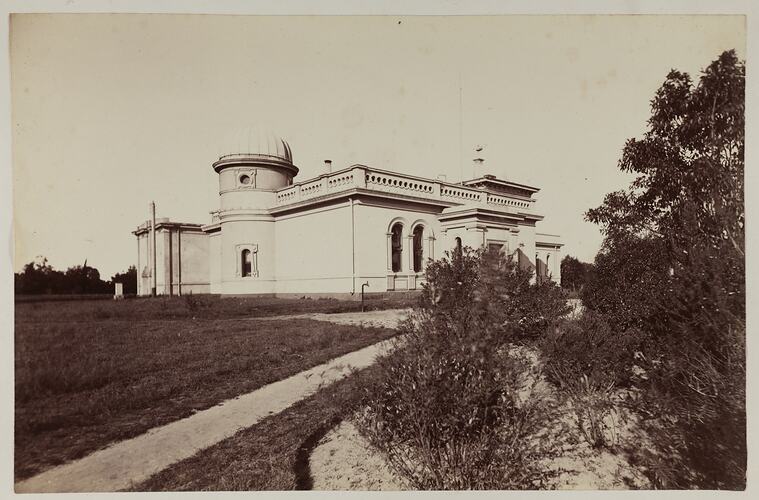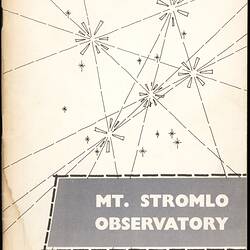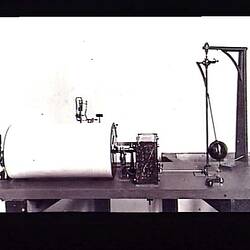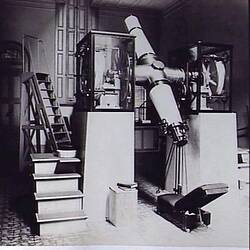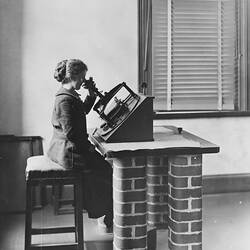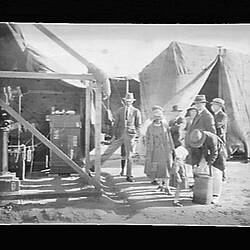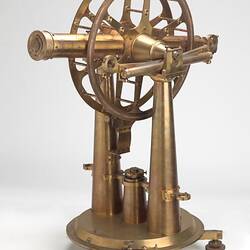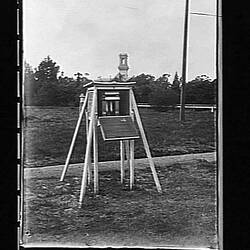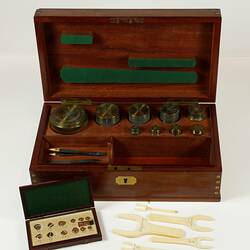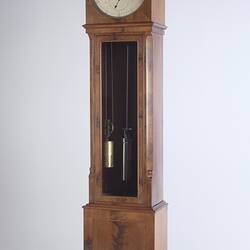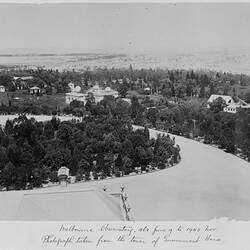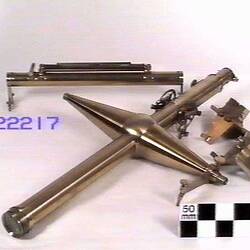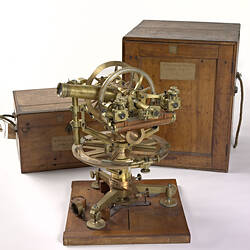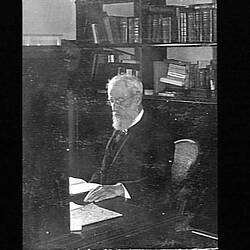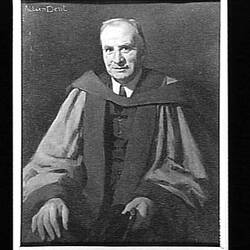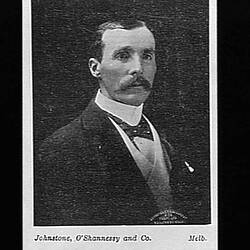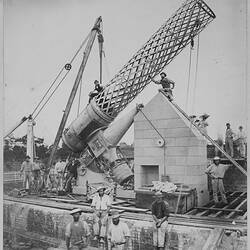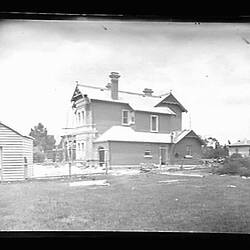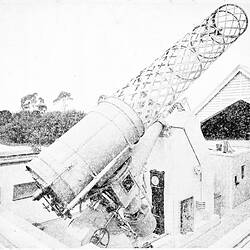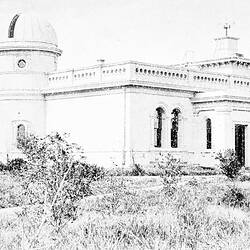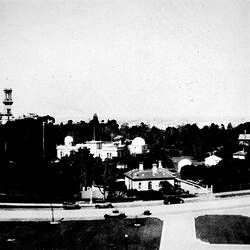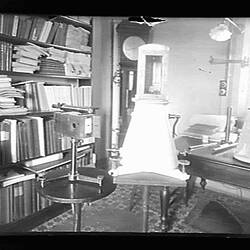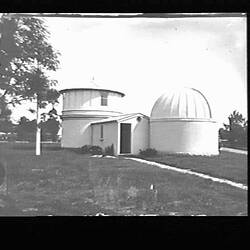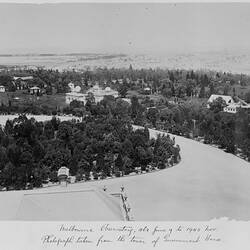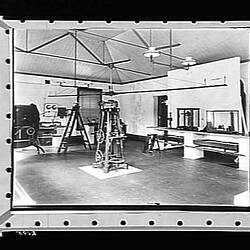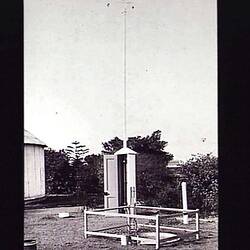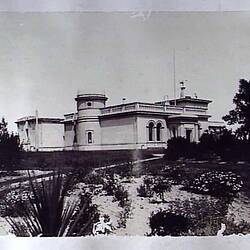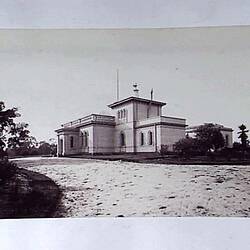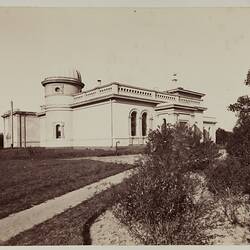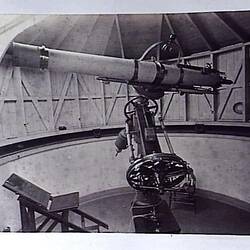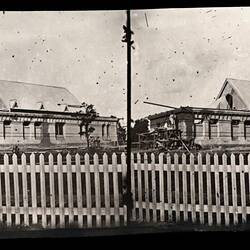Melbourne Observatory was established in 1863 through the merging of Williamstown Observatory, which had been established in 1853 as an astronomical observatory, and the Flagstaff Observatory, which had been conducting magnetic and meteorological observations since 1858. A Board of Visitors was established in 1860 to oversee both observatories, and it recommended the two institutions be merged into a 'permanent National Observatory'; Robert Ellery and Georg Neumayer, respective directors of Williamstown and Flagstaff observatories, agreed with the plan.
After testing of suitable sites for magnetic and atmospheric disturbances that might effect observations, a site adjacent to the Botanic Gardens was selected. Neumayer was returning to Germany after his five years of research in the colony, and Ellery was appointed Government Astronomer, in charge of the Observatory's combined functions of astronomy, timekeeping, geodetic surveying, magnetic research and meteorology.
Ellery would remain Government Astronomer until his retirement in 1895, and during this period he created one of the leading scientific institutions in Australia, and the second most important astronomical observatory in the southern hemisphere (after the Royal Observatory in South Africa). By the mid 1880s there was a staff of about 11, including assistant astronomers, meteorologists and a mechanic and messenger.
Ellery and his staff covered a wide range of scientific activities, from pure research to practical science that was critical for the colony's operations. This included fundamental mapping of the southern hemisphere stars, published as catalogues and distributed to astronomers around the world. Special astronomical events such as solar eclipses, transits of Mercury or Venus across the face of the Sun, and comets resulted in special projects to compare observations of the phenomena with astronomers worldwide. With the arrival of the Great Melbourne Telescope in 1869, the Observatory began a detailed study of the southern nebulae to see if these had changed in their character since observations by Herschel in the early 19th century.
Meanwhile, the Observatory contributed to the practical operation of the colony. It provided standard Observatory time to ships' captains, central city clocks and the railways. Telegraphic connection to weather stations throughout Victoria and the other colonies enabled the gathering of meteorological data; by 1881 it was providing weather maps and weather forecasts to the daily newspapers.
In 1890 the Observatory joined an international project to take photographs of the entire sky, and create maps and catalogues from the photographs. Melbourne Observatory was one of 18 observatories to join what was the largest scientific project undertaken in the 19th century. Teams of workers were engaged to measure the star photographs and reduce the long series of magnetic and meteorological data into publishable form. This project would consume the energies of the Observatory (and many others) for the next 20 years, and the final Melbourne catalogue was not published until 1963.
Ellery retired in 1895 as the Depression was hitting hard, and the Observatory took years to regain a full complement of staff. In 1908 the Commonwealth Government took over responsibility for meteorology and some staff transferred to the Weather Bureau. Australian Federation in 1901 had also brought new responsibilities, as the checking of weights and measures, previously done by Customs, was transferred to the Observatory.
While the Observatory continued to do important astronomical observations, mount eclipse expeditions, and undertake some new projects in astronomy and physics, by the 1920s there was a sense it was being weighed down by its administrative burdens, and the long-drawn out battles to get sufficient funds to reduce and publish observations made decades before.
Astronomy, like meteorology, was specifically mentioned in the Constitution as a Commonwealth responsibility, and Melbourne Observatory, like its counterparts in Sydney and Adelaide, was never adequately funded after World War I. Symbolically it was Pietro Baracchi (the second Government Astronomer) and Joseph Baldwin (the third and last Government Astronomer) who undertook observations every month for a year in 1911-12 at Mount Stromlo, leading to the creation of the Commonwealth Solar Observatory in 1924, the first astronomical institution of the federal government.
Melbourne Observatory closed in 1944, following 20 years of fruitless discussion between the Victorian and Australian governments about its future. The timekeeping responsibilities were taken over by the Post Master General's Department, the Great Melbourne Telescope and observational records were sent to Mount Stromlo, and the weights and measures function continued at the observatory site. Some original instruments remained, to be operated by the Astronomical Society of Victoria for its members and the general public. Older equipment was transferred to Museum Victoria.
The Melbourne Observatory site is now part of the Royal Botanic Gardens Melbourne, which in partnership with the Astronomical Society of Victoria interprets the history of the site and offers public viewings through the remaining telescopes.
References:
'Annual Reports of the Board of Visitors to the Observatory, together with the Report of the Government Astronomer', 1860-1914, Victorian Parliamentary Papers, Melbourne.
Bhathal, Ragbir & White, Graeme (1991). A Brief History of Astronomy in Australia, Kenthurst, NSW: Kangaroo Press.
Perdrix, John L. (1961). 'The Melbourne Observatory,' Journal of the Astronomical Society of Victoria, pp. 19-25, pp. 45-48, pp. 60-64.
More Information
-
Keywords
-
Authors
-
Article types
